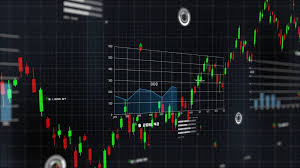
Understanding Crypto Trading Systems: A Comprehensive Guide
As the world of digital currencies continues to evolve, Crypto Trading Systems https://www.stockopedia.com/content/thursday-notes-from-mello-2018-361528/ have emerged as essential tools for both novice and seasoned traders alike. These systems are designed to provide an analysis framework that helps in making informed trading decisions. In this article, we will delve deep into the various aspects of crypto trading systems, including what they are, how they function, the types available, and strategies to maximize their effectiveness.
What are Crypto Trading Systems?
Crypto trading systems refer to comprehensive frameworks that enable individuals to engage in buying and selling cryptocurrencies efficiently. These systems can range from simple manual methods to advanced automated trading platforms. The primary objective of a crypto trading system is to help traders achieve profitable trades by utilizing algorithmic strategies, market analysis, and technical indicators.
The Mechanics of Crypto Trading Systems
Understanding how these systems work is crucial for effective utilization. Generally, crypto trading systems operate on the following basis:
- Market Analysis: Most systems start with a comprehensive analysis of the market. This can include examining historical price movements, market trends, and trading volumes.
- Technical Indicators: Many trading systems use technical indicators like Moving Averages, Relative Strength Index (RSI), and Bollinger Bands to provide insights into potential market movements.
- Trade Execution: Once a trading signal is identified, the system can execute trades automatically or provide alerts for manual execution.
- Risk Management: Effective crypto trading systems include strategies for managing risks, such as setting stop-loss orders or taking profit at predetermined levels.

Types of Crypto Trading Systems
There are various types of crypto trading systems that cater to different trading styles and preferences. Here are the most common types:
1. Manual Trading Systems
These require traders to execute trades manually based on their research and analysis. While this method gives total control over trading decisions, it can be time-consuming and emotionally taxing.
2. Automated Trading Systems
Automated trading systems use algorithms to analyze the market and execute trades without human intervention. They are ideal for traders looking for efficiency and the ability to trade 24/7.
3. Semi-Automated Systems
Semi-automated systems offer a blend of manual and automated trading. Traders receive automated signals but have the discretion to execute trades themselves based on additional personal analysis.
4. High-Frequency Trading (HFT) Systems
High-frequency trading systems use advanced algorithms to execute numerous trades in fractions of a second. These systems cater to professional traders and requires significant investment in infrastructure and technology.
Popular Crypto Trading Platforms
There are various platforms offering comprehensive trading systems. Some of the most well-regarded ones include:

- Binance: Known for its vast selection of cryptocurrencies and user-friendly interface.
- Coinbase Pro: Offers advanced charting features and a variety of trading options.
- Kraken: A strong security track record and comprehensive trading features.
- Bitfinex: Provides advanced trading tools and high liquidity.
Strategies for Successful Crypto Trading
While having a robust trading system is essential, employing effective strategies can significantly enhance trading outcomes. Here are several strategies traders often adopt:
1. Trend Following
Traders using this strategy seek to capitalize on existing market trends. By analyzing historical price movements, they identify and follow the upward or downward market trends.
2. Arbitrage
Arbitrage involves taking advantage of price discrepancies between different exchanges. Traders buy at a lower price on one platform and sell at a higher price on another, securing a profit.
3. Scalping
This involves making numerous small trades throughout the day to accumulate profits. Scalpers often rely on automated systems to execute trades swiftly.
4. Swing Trading
Swing traders look for short-to-medium-term gains over a few days to weeks. The strategy often relies on technical analysis and market indicators to identify entry and exit points.
Challenges in Crypto Trading
While crypto trading systems offer numerous advantages, they also come with challenges:
- Volatility: Crypto markets can be highly unpredictable, leading to significant price swings that can impact trading outcomes.
- Security Risks: Traders must be cautious of hacking and fraud, as cryptocurrency exchanges and wallets can be vulnerable.
- Lack of Regulation: The relatively unregulated nature of crypto markets can lead to manipulation and unreliable platforms.
The Future of Crypto Trading Systems
As technology continues to advance, the future of crypto trading systems looks promising. Innovations such as Artificial Intelligence (AI) and Machine Learning (ML) are expected to revolutionize the way traders analyze markets and execute trades. By effectively integrating these technologies, traders can gain deeper insights and enhance the accuracy of their trading strategies.
Conclusion
In conclusion, crypto trading systems have transformed the landscape of digital currency trading, offering traders enhanced efficiency and opportunities for profit. By understanding how these systems work, the various types available, and implementing effective trading strategies, traders can navigate the complexities of the crypto market with greater success. The future holds exciting possibilities for innovation in trading technology, making it a thrilling time to engage in crypto trading.

